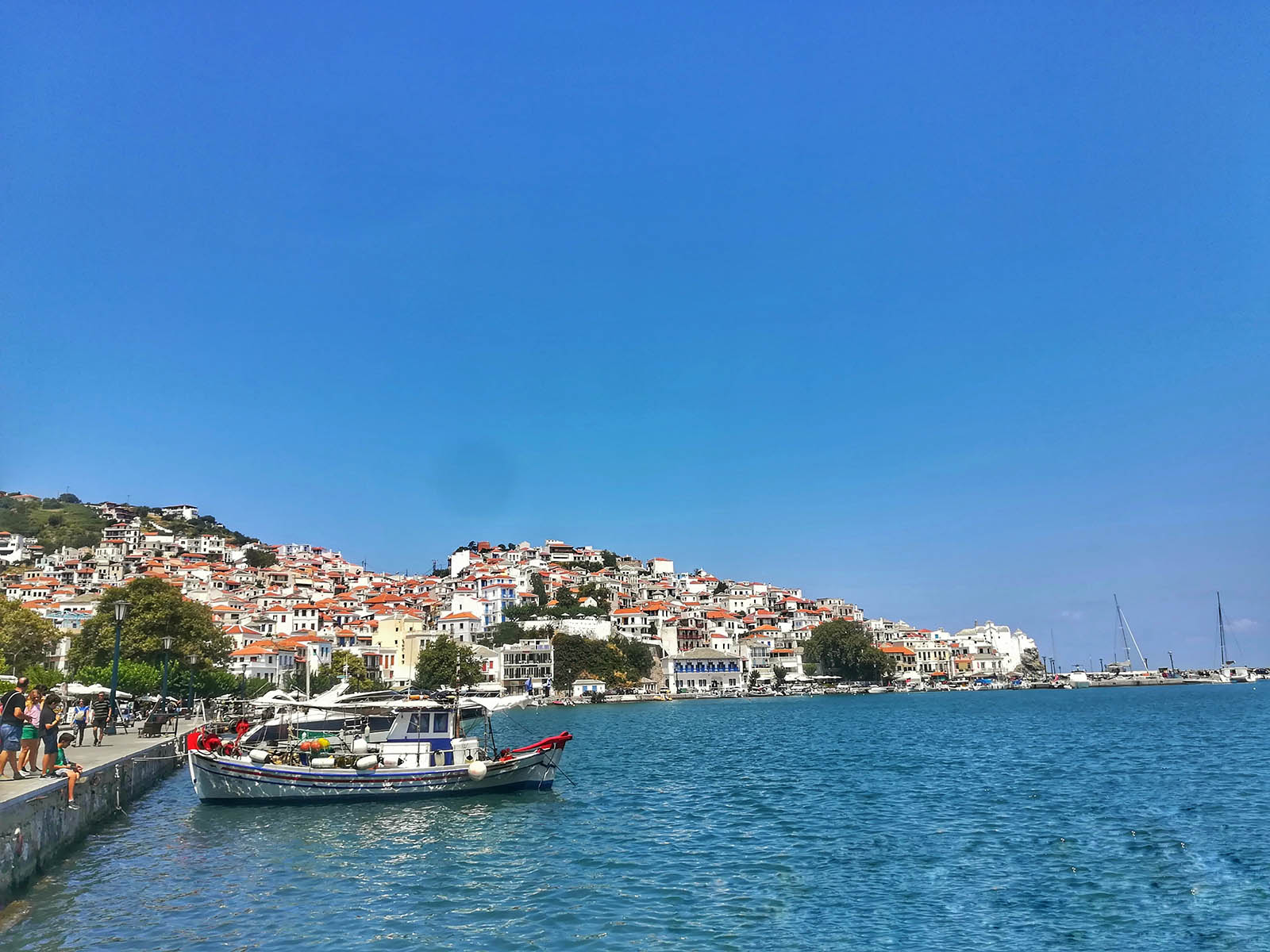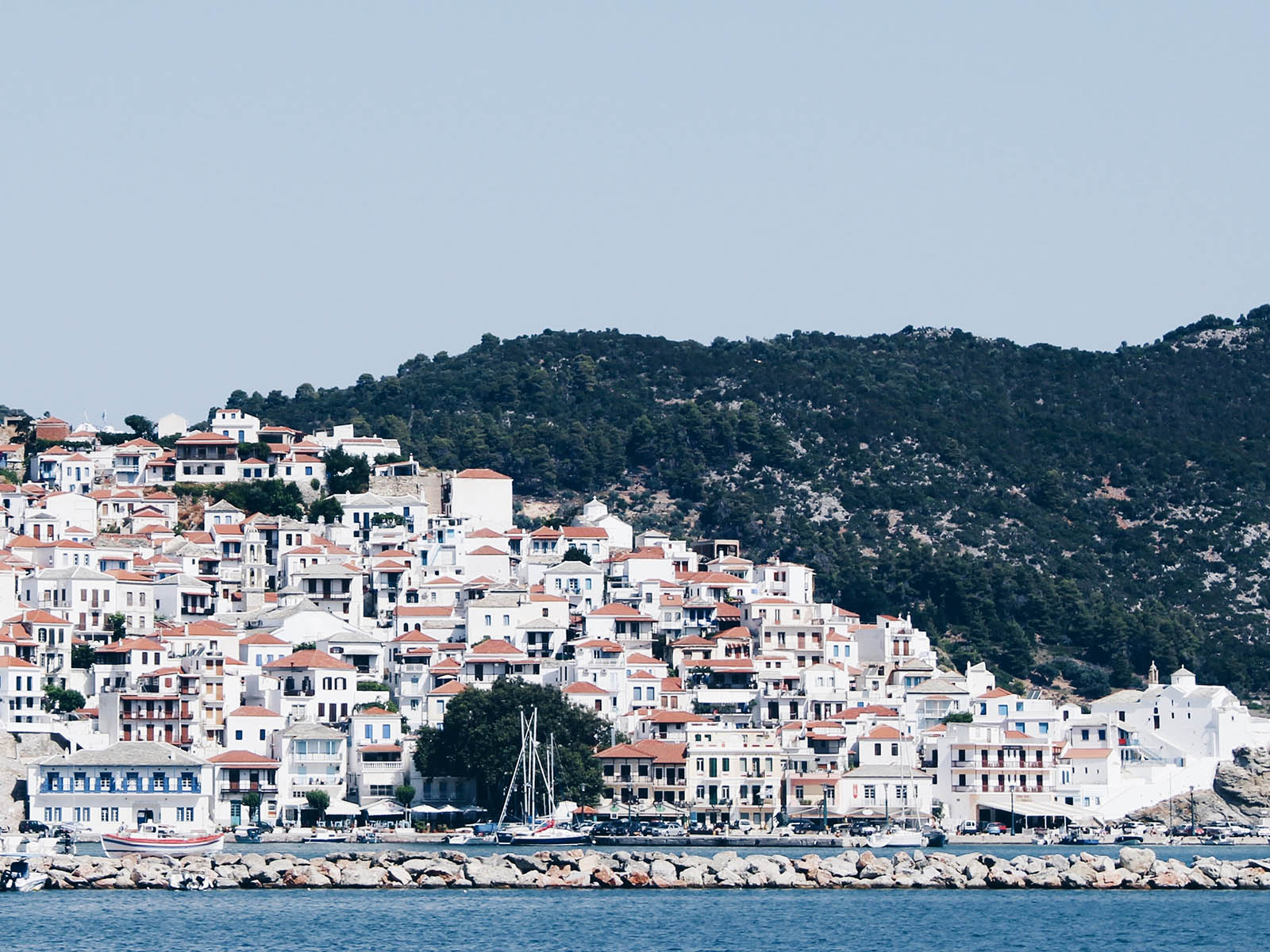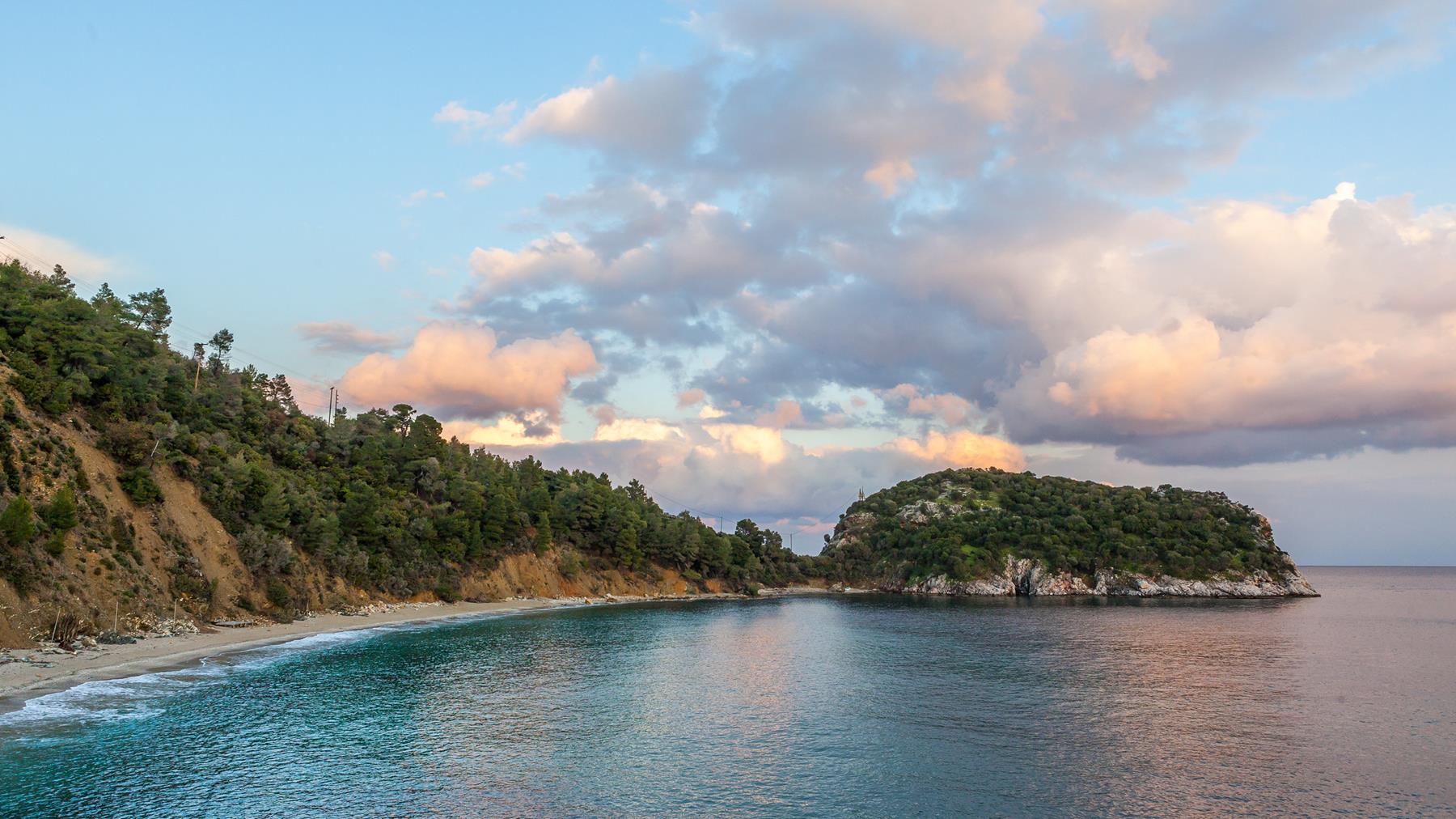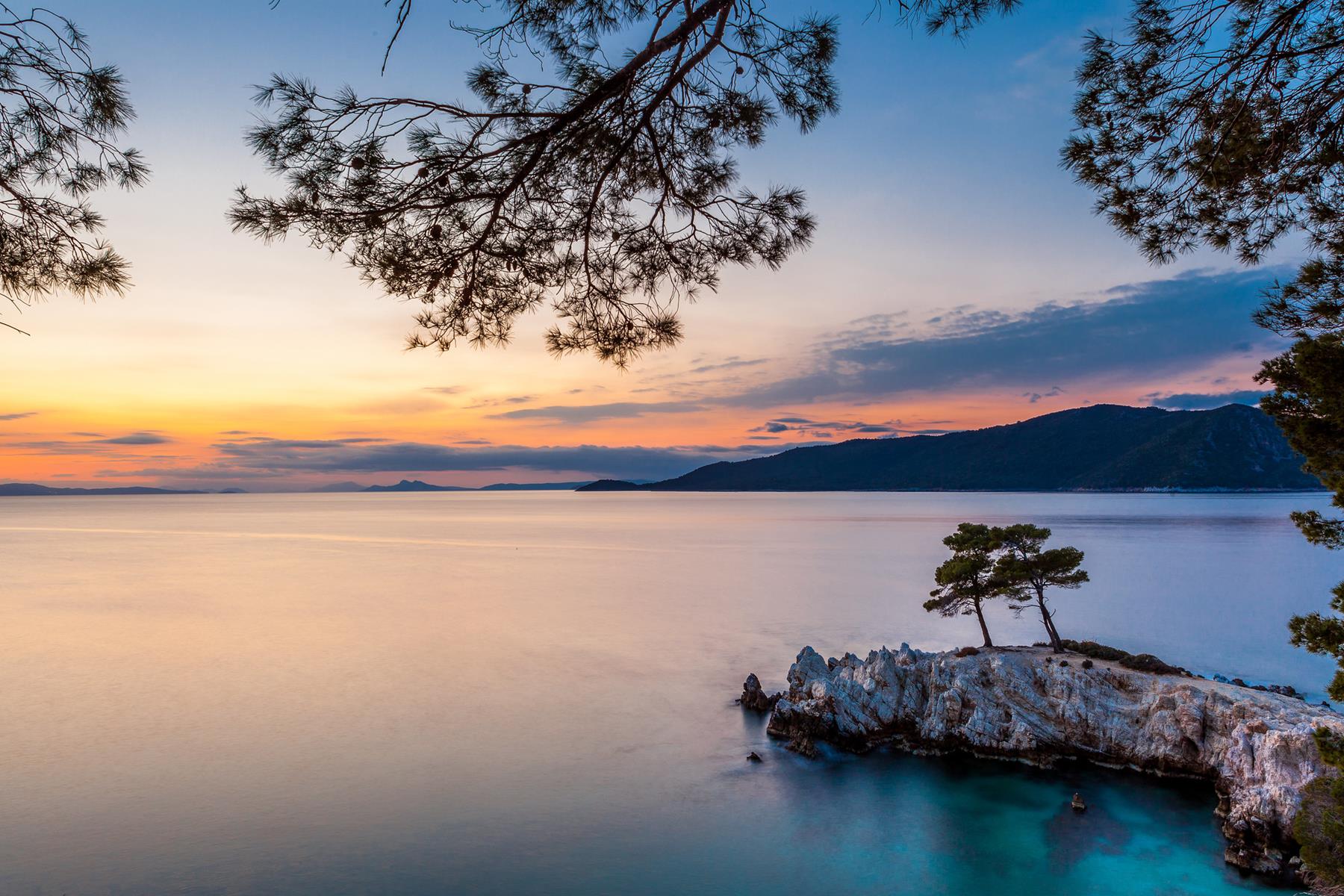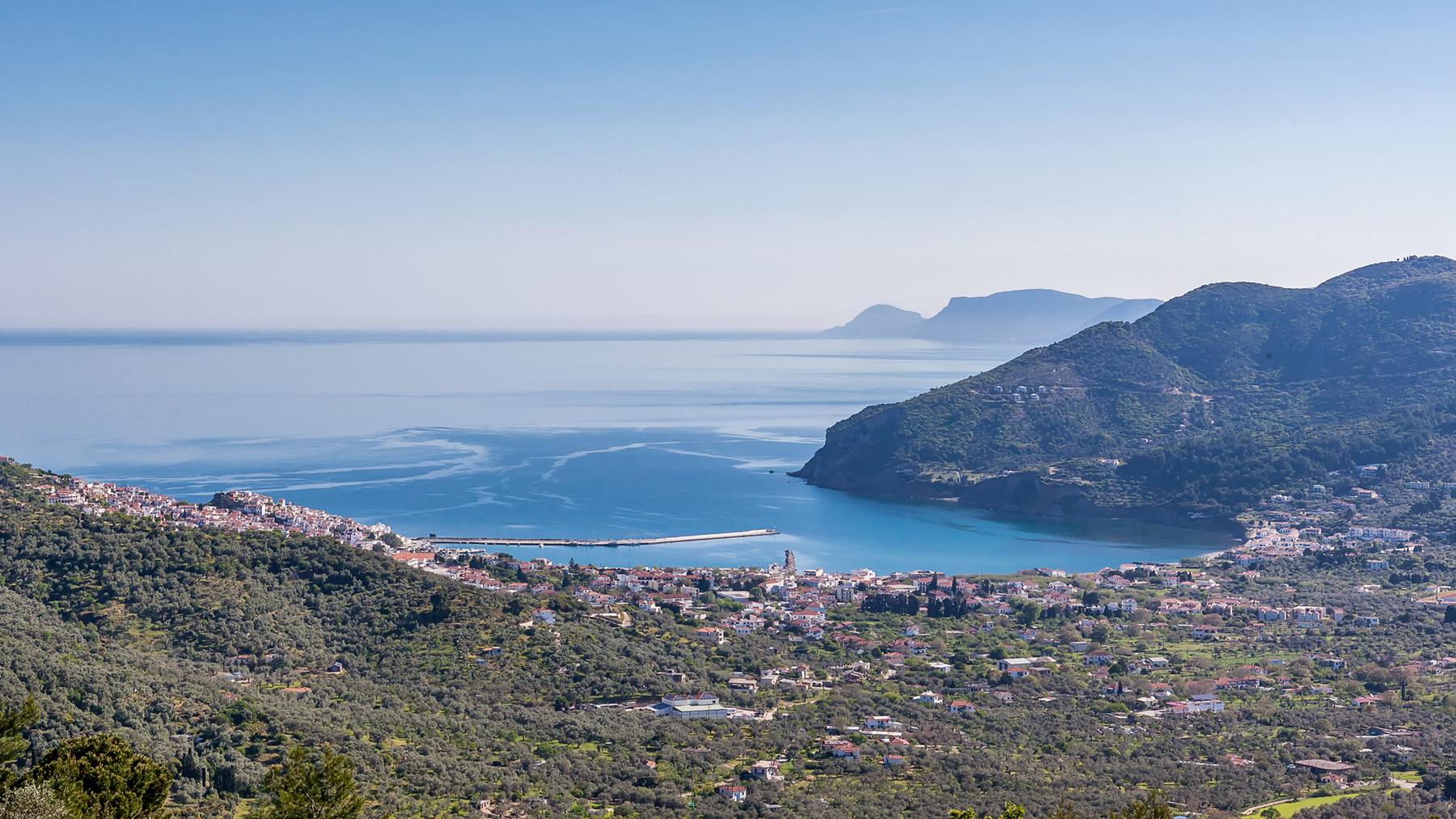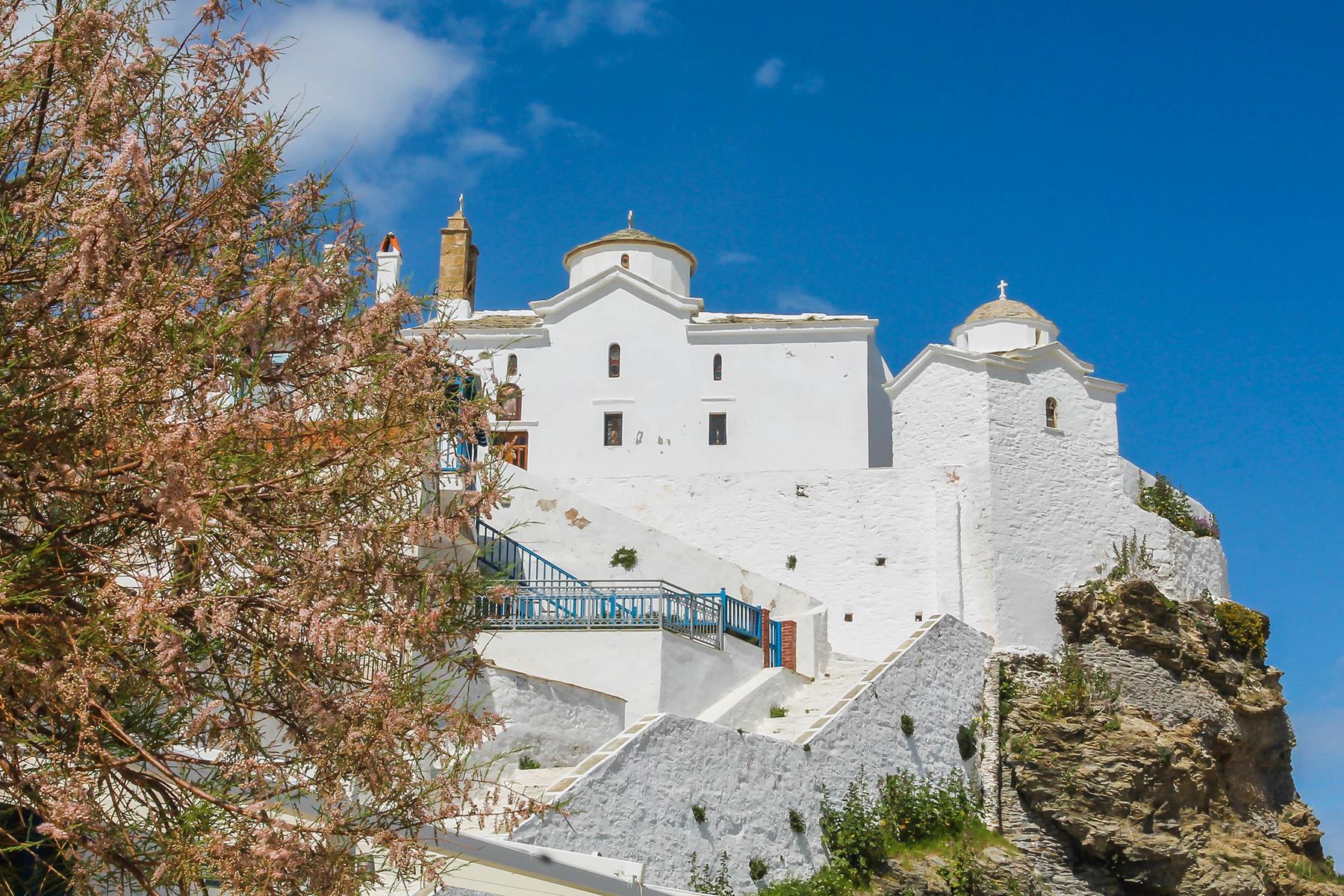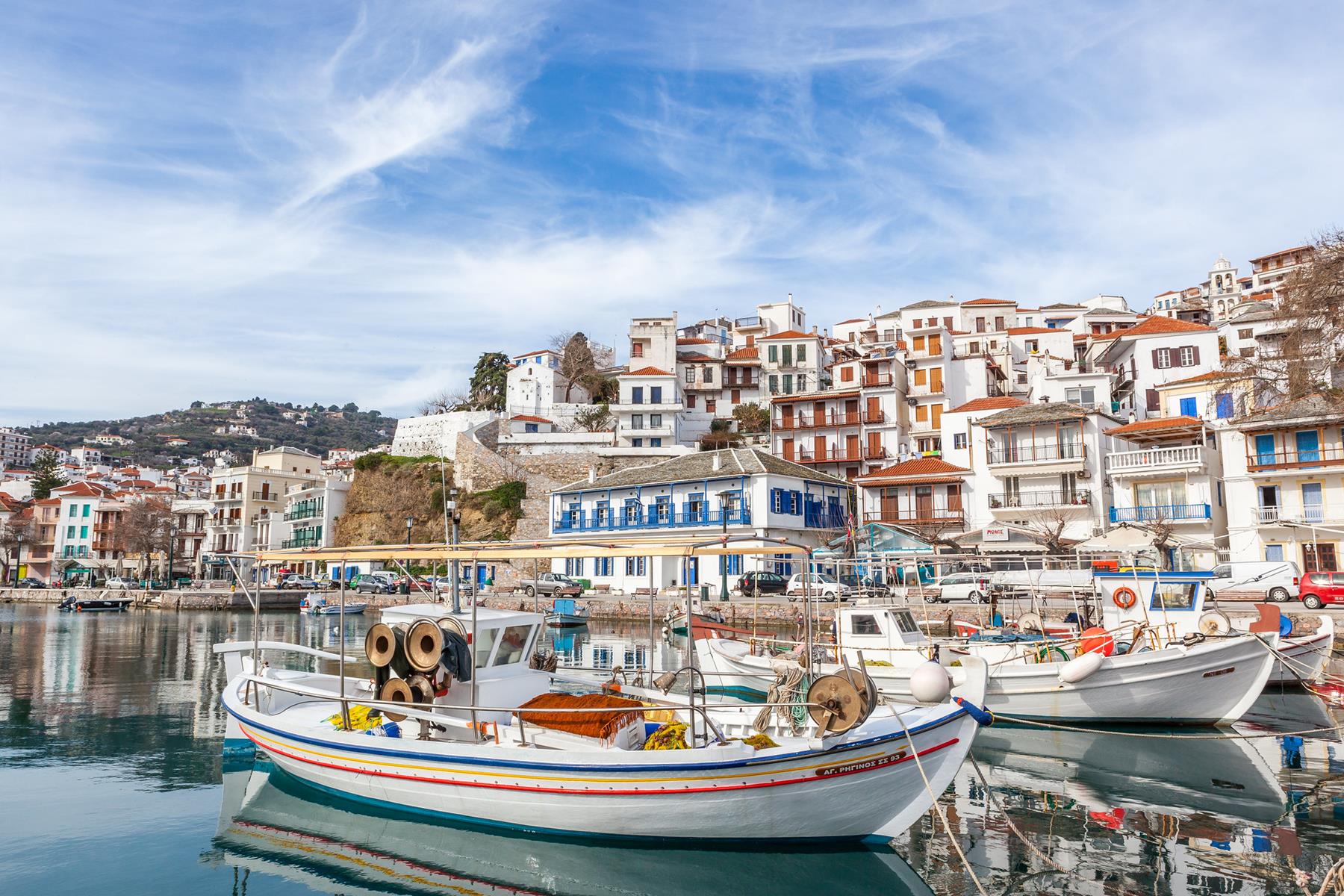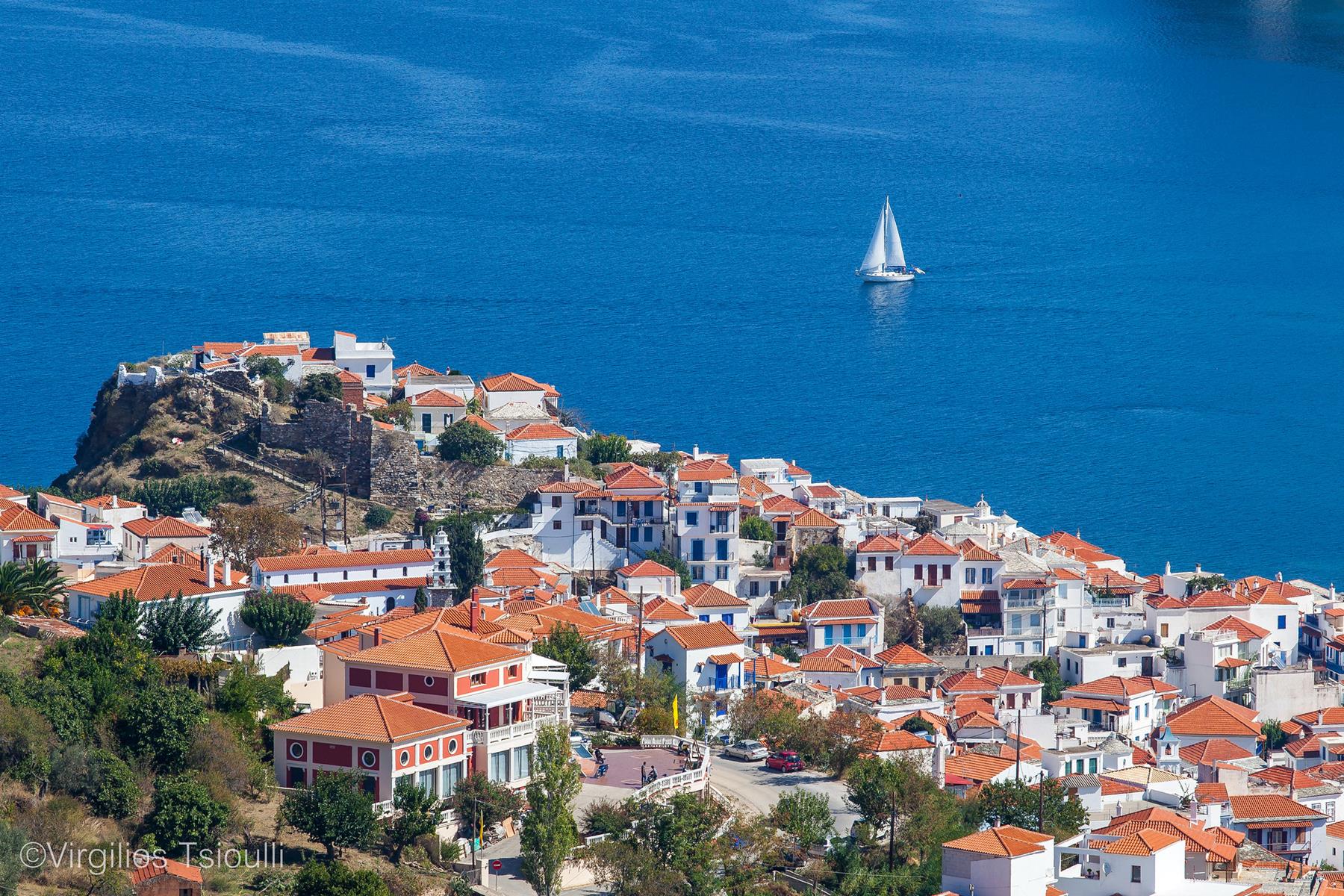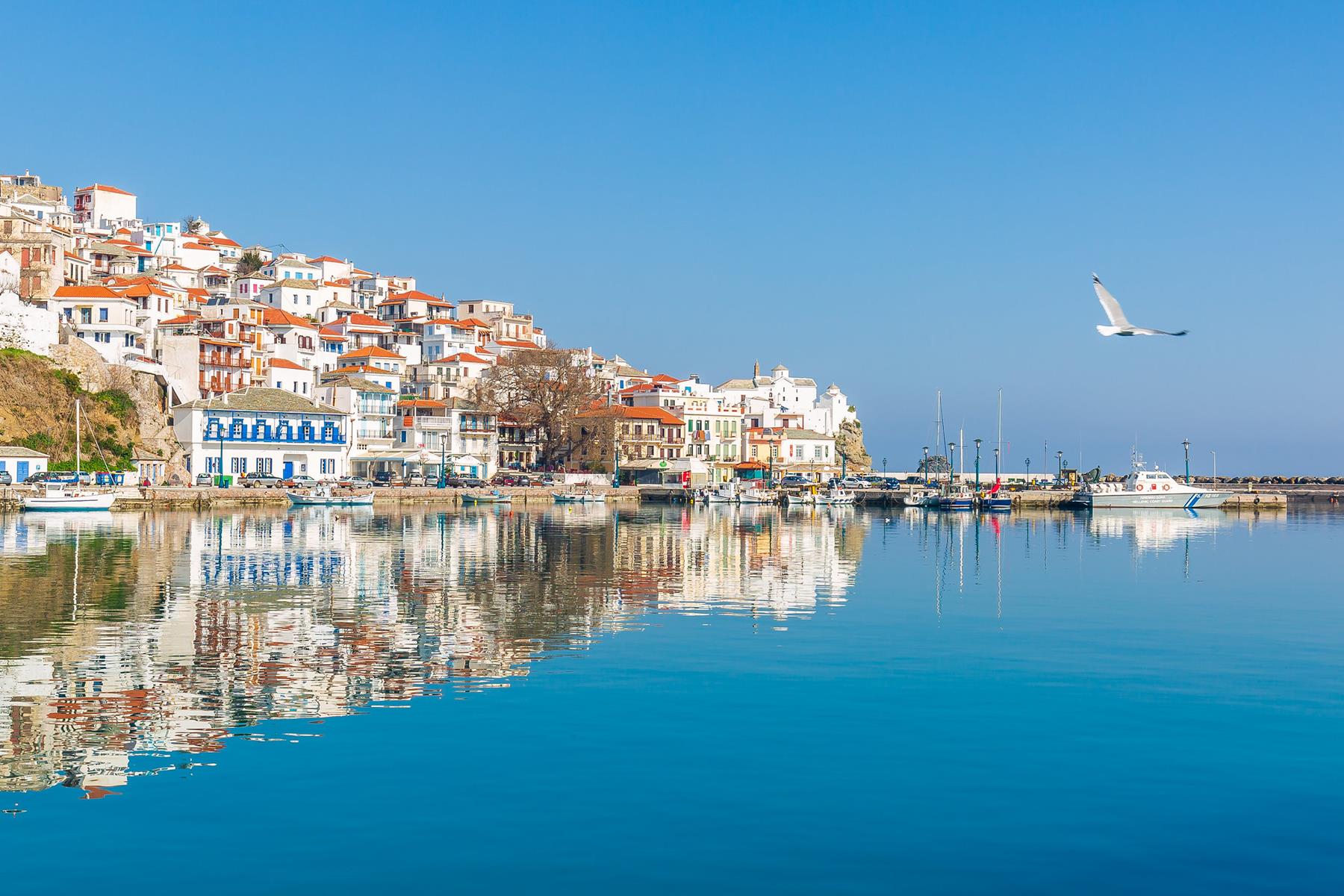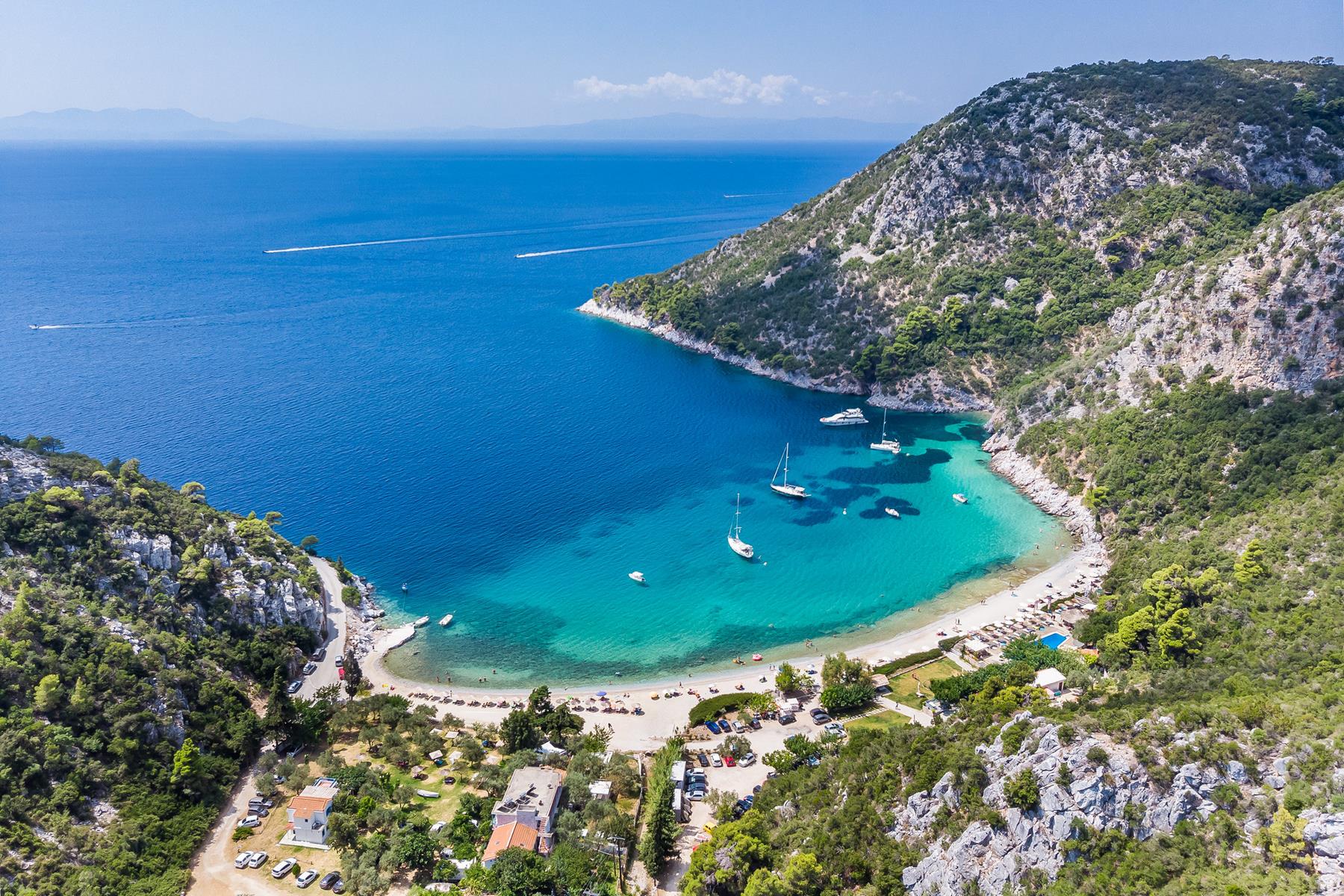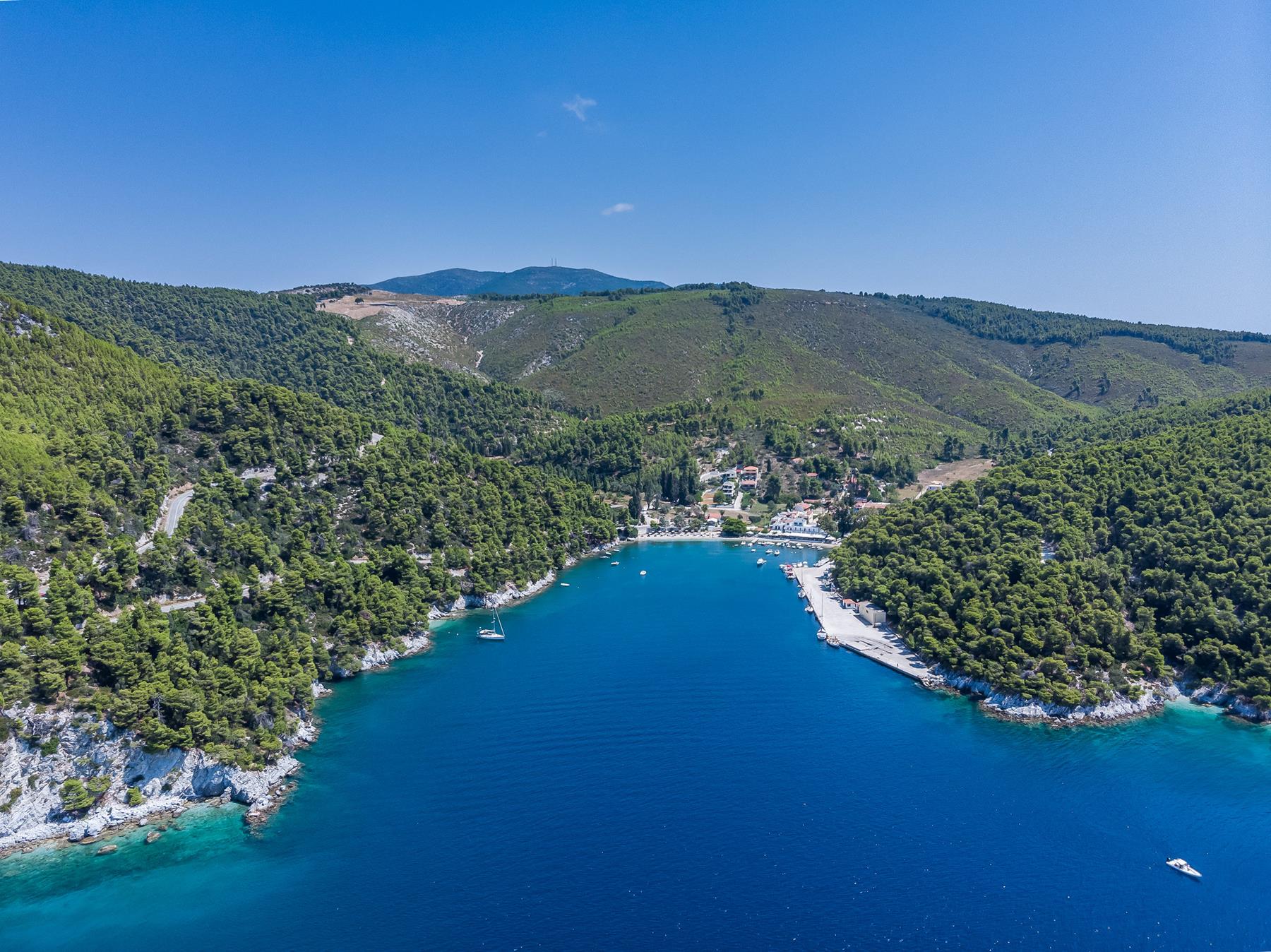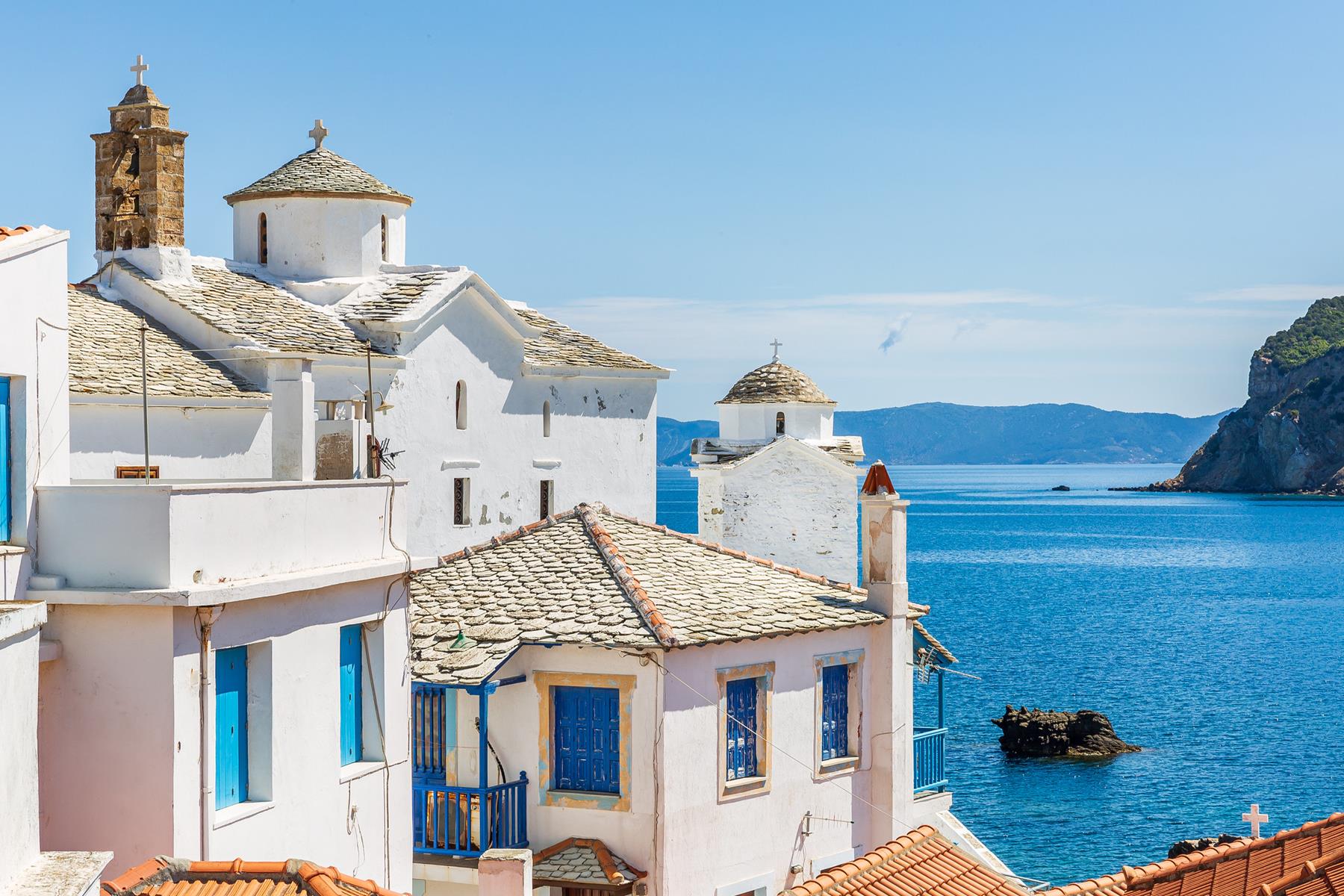This website uses cookies so that we can provide you with the best user experience possible. Cookie information is stored in your browser and performs functions such as recognising you when you return to our website and helping our team to understand which sections of the website you find most interesting and useful.
- Home
- SIGHTS
SIGHTS
Venetian Castle
The Venetian castle of Skopelos -of which only the remains of the wall are saved to date- is in the area of the oldest settlement on the island, Peparithos. It was repaired by the Venetians in the 13th c. and is a part of the rest of the chora of Skopelos. The Castle is visible from any part of Chora. You will reach it by climbing the steps above Panagitsa tou Purgou at the edge of the port. Today it has an archaeological and touristic importance, as at the top you will meet Giorgos Xintaris, one of the last remaining people of the rebetiko music.
Ai Giannis at Kastri
Shortly before reaching Glossa, om your right, you come across a road that leads to the chapel of Ai Giannis at Kastri. The chapel of Ai Giannis is at the top of a rock 100 m high and to reach it one must climb about 200 steps cut into the rock. Before the road reaches the sea, there is a tap with water at the chapel of Panagia. The visitor climbs up a well protected staircase cut into the rock. The view from the top is mesmerizing. The small, almost lonely beaches with their green-blue waters among the grey rocks add one more tone of beauty to the area. Tradition has it that as a fisherman from Glossa was returning from fishing one night, he saw a light at the top of the rock. He would see it every night, until a woman appeared in his sleep and revealed to him that there is an icon at the top. When he climbed to the top, he found the icon of Saint John the Baptist. He took the icon, but wherever he transported it to, it returned to its original position, so that is where the chapel was finally built, celebrating on August 29.
Skopelos Folklore Museum
The Skopelos Folklore Museum, where physical evidence of the land are found, was founded with an aim to project the cultural richness of the island and create a spiritual core equal to the traditions and its history. The building which houses the Folklore Museum was donated in 1991 by the Nikolaidis family to the Municipality of Skopelos. The old building was built in 1795 and maintained up to 1963, when the first and second floors collapsed due to earthquakes. The foundations of the building were re-built in 1971 based on the plans of the old building and it took the form it has today, maintaining all the internal and external characteristics of the traditional style of the settlement, which has been legally deemed as listed. The Folklore Museum of Skopelos opened its doors to the public in August 1992, giving back life to the old mansion of the previous century.
Folklore Museum of Glossa
The village of Glossa also hosts a Folklore Museum, and specifically in the centre of the village, above the church of the Assumption. It is a two-storey traditional house, where the visitor will get the chance to see the traditional costumes of the island, items of every day use, furniture, as well as how the inside of traditional houses in the village was formed and decorated. The Folklore Museum in Glossa is open every morning and evening during summer months.
Vakratsas Mansion
The Vakratsas mansion is in the centre of Chora, a little way from the beach. It is a typical example of a Skopelos mansion and it used to be owned by Antigoni Vaktratsas, who donated it to the Municipality of Skopelos, so that it could become a museum. Indeed, about a year ago, the mansion opened its doors to the public. In its areas, one can find the heirlooms and personal items of the Vakratsas family. Apart from these, visitors have the chance to see the inside of a typical mansion on Skopelos. It is worth noting that the beautiful garden area –with the characteristic palm tree- hosts cultural events, such as book presentations and speeches. The Vakratsas Mansion is open every morning and evening.
Asclepieion of Peparethos
Asclepieion of Skopelos (old Peparethos). Among the important sanctuaries of the town of Peparithos is its Asclepieion, is located on the south-east side of the gulf of Skopelos, at the area “Livadi - Ampeliki” (opossite Skopelos Chora), which was identified due to the finding of an inscribed oblation base, dedicated to Asclepius. In 1961 for the first time revealed walls of ancient buildings in the area, but within a few years were destroyed by the sea. Most recent excavations in the same location revealed extensive building complex, whose position and the various artefacts, between which and a seal with the inscription ASKL in shell, suggests that this was a sanctuary of Asclepius. Asklipieio Skopelos considered the oldest in the Aegean. Archaeologists have uncovered so far amphorae, red-figure Attic vases, fragments of statues and terracotta figurines and coins dating to the shrine of the 4th century to the Hellenistic period. Based on these findings, it appears that attached shrines and other gods with time in the main sanctuary. The archaeological site of Asklepios recently created a building where are exposed a small number of findings for visitors.
Pavlos Nirvanas House
An important modern monument in Magnissia, the Nirvanas house on Skopelos, is reborn an it is soon to open its doors to the public. The building was repaired and transformed into a historical showroom of the town of Skopelos from antiquity to our days. The responsibility and monitoring of the whole project was undertaken by the Office of Modern Monuments and Technical Works in Thessaly of the Ministry of Civilisation. This house was where Pavlos Nirvanas, the modern Greek novelist, spent his childhood years; his origins were on Skopelos and his real name was Petros Apostolidis. It is built in the centre of the traditional settlement of Skopelos, in the district of Agios Ioannis, next to the church of the Three Hierarchs, with an amphitheatrical view of the town and the picturesque port of Skopelos.
Sentoukia -Tafi (Treasure Chests – Graves)
Sentoukia is an area northwest of Skopelos Chora, at the top of hill Karyaand above the beautiful St. Eustace Monastery (Agios Efstathios) with its panoramic view. Four magnificent rock cutgraves from the Roman or early Christian period were discovered in this area which is full of legends and hidden treasures! Two graves are parallel to each other while a third, unfinished, lies between them. The fourth grave is found two meters further away and is parallel to all three graves.
APERITTON HOTEL
Experience a relaxing holiday in the heart of Skopelos.

Aperitton Hotel is ideal for holidays in Skopelos! It has rooms and suites, a swimming pool with pool bar, and free breakfast and brunch. We have concierge and wellness services that will meet your every need during your trip.
ΜΗΤΕ: 07 26 Κ 01 3Α 00229 0 0

